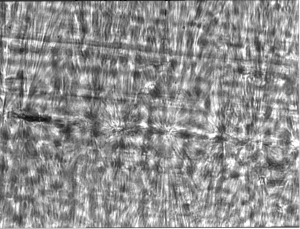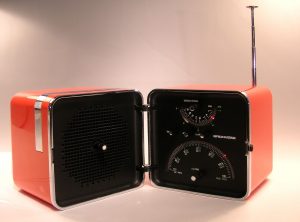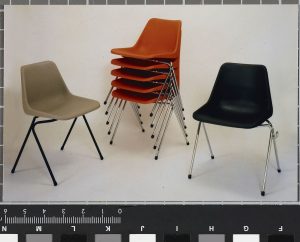The “century of plastic” officially began March 11th 1954, when Giulio Natta developed isotactic polypropylene (PP-H) the first mass-consumption plastic material in the history of mankind.

image source: https://en.wikipedia.org/wiki/Plastic#/media/File:Plastic_household_items.jpg
How is Moplen made?
Later branded as Moplen by Montecatini General Society, isostatic polypropylene is a thermoplastic polymer produced via chain-growth polymerization from the monomer propylene, a gas extracted from petroleum, which started to replace carbon between the ’50s and the ’60s.
Methyl groups are oriented on one side of the carbon chain, creating a rigid polymer that can be formed at low temperatures and pressures using Ziegler-Natta catalysts, named after the two scientists who discovered how to synthesise this new type of plastic, receiving a Nobel Prize for chemistry in 1963.

image source: https://en.wikipedia.org/wiki/Polypropylene#/media/File:Polypropene_migrograph.png
What are its main properties?
- It’s generally very cheap and easy to work with, which contributed to the start of mass production in Italy and the following democratisation of consumption;
- High mechanical strength and dielectric properties;
- Extremely lightweight (specific weight of 0.90);
- High corrosion, scratching and heat resistance;
- Polished, smooth and brightly coloured finish;
What is it used for? Why was it so popular?
Moplen’s versatility makes it the most commercialized form of polypropylene. During the “economic miracle” in the ’60s, it invaded Italian homes: due to its peculiar chemical structure, Moplen can be it can be extruded in fibres or films, produced via vacuum forming or even pressed into complex moulds.
The technological and industrial progress that characterized this period also helped develop new objects designed only for the use of this material, such as disposable objects, anonymous designs and a variety of “cult” pieces created by popular designers such as Marco Zanuso or Vico Magistretti, which became known as gurus of the Italian 50’s Industrial design.

image source: https://www.catawiki.com/en/l/12526179-marco-zanuso-richard-sapper-for-siemens-grillo-folding-telephone by Francisco Álvarez

image source: https://en.wikipedia.org/wiki/Brionvega

Info source: https://en.wikipedia.org/wiki/Polypropylene#Isotactic_polypropylene_(iPP)
